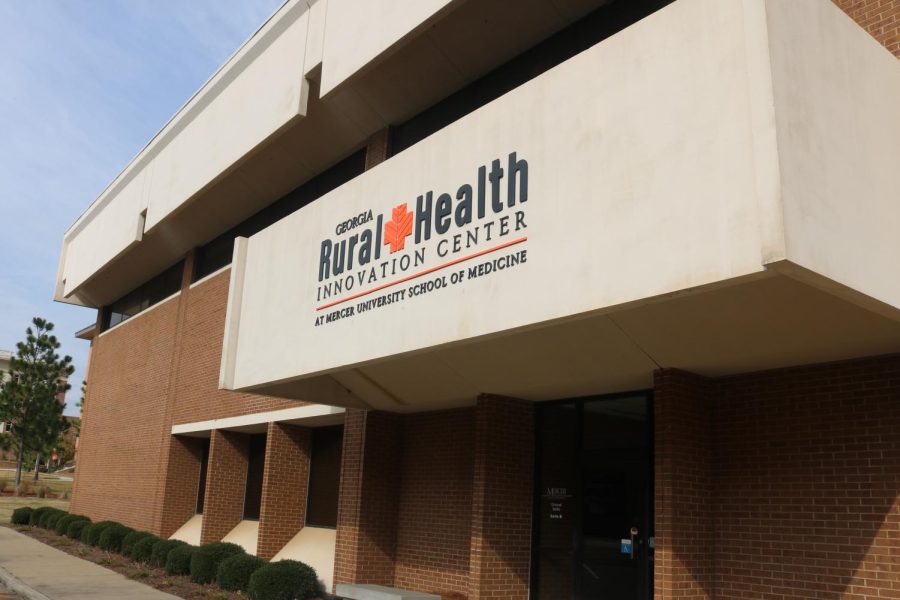Georgia’s maternal mortality rates are growing– how are local organizations responding?
The Georgia Rural Health Innovation Center was established in 2018 by Georgia lawmakers to address “the complex health care challenges and wellness disparities facing rural communities,” according to the Center’s website. Maternal morality is one area of their work across the state, with initiatives underway to make holistic maternal healthcare more accessible to Georgia’s rural communities.
In 2022, Georgia was one of the most dangerous places in the United States to give birth.
Ranked 43rd out of 50 states by the Center for Disease Control for its high maternal mortality rate, Georgia is one of eight southeastern states that are home to the country’s most alarming rates of pregnancy-related deaths, reflecting a dangerous trend for pregnant people living in the South.
“We know that the state of Georgia itself has one of the leading maternal mortality rates,” Michael Hokanson, public information officer for the North Central Health District of the Georgia Department of Public Health, said. “A lot of those are pregnancy-associated deaths rather than pregnancy-related deaths but of course, those numbers are still rather high compared to the rest of the country.”
Pregnancy-associated deaths refer to those that occur “during pregnancy or within one year of the end of pregnancy due to a cause that is not related to pregnancy,” while pregnancy-related deaths refer to those that happen “during pregnancy or within one year of the end of pregnancy from a pregnancy complication, a chain of events initiated by pregnancy or the aggravation of an unrelated condition by the physiologic effects of pregnancy,” according to the Georgia Department of Public Health website. The state’s Maternal Mortality Review Committee identifies and investigates maternal deaths to determine “pregnancy-relatedness” and contributing factors, Hokanson said.
“Within Georgia itself, we are looking at disparities when it comes to racial factors, socioeconomic factors, and there is a huge gap in the healthcare of the rural parts of Georgia versus the urban parts of Georgia,” Hokanson said.
Factors Contributing to Georgia's Maternal Mortality Rates
Dr. Laura Simon, assistant professor of sociology at Mercer University in Macon, Ga., said that factors like a patient’s race, socioeconomic status and access to equitable, quality care interact to impact their overall health before, during and after pregnancy. While some scholars have linked rates of maternal mortality exclusively to lower-income communities, Simon said that there is an “ increased rate of maternal mortality among Black women” across all socioeconomic statuses.
“There is research that suggests the importance of the patient-doctor dynamic for Black women. There is a consistent finding where their voices are not being heard, where they are expressing discomfort or not feeling well, and they’re being told they’re fine,” Simon said. “That doesn’t appear to happen in the same way for white women.”
Black women in the United States are three times more likely to die from pregnancy-related causes than white women, according to the CDC. This “overrepresentation” of Black women in maternal mortality statistics has roots in both healthcare inequities and systemic racism as a whole, Simon said.
“We think about things like systemic racism and this broader inequality and day-to-day stressors related to discrimination,” Simon said. “Whatever those stressors look like, they’re going to look different for everyone. That suggests that there’s an intersection of stress and maternal mortality among Black women because their bodies… have just been experiencing more fights in life because society is not a particularly great place for their body without a pregnancy.”
Rural communities across the state of Georgia are another population that is particularly vulnerable to health-related disparities during pregnancy. Glenda Grant, executive director of the Georgia Rural Health Innovation Center, said that large swaths of rural Georgia are medically underserved.
“Generally what you find is, problems may be the same in bigger counties as they are in smaller counties but the resources are vastly different,” Grant said. “Health disparities may tend to be worse in rural communities. There’s a lot of undiagnosed, under-diagnosed problems. They don’t have enough physicians and providers in those areas, so it’s very difficult.”
Of the 120 rural counties that the Georgia Rural Health Innovation Center serves, 93 do not have a hospital with a labor and delivery unit, Grant said. As a result, many pregnant people living far from medical services face transportation as a major barrier to accessing comprehensive, consistent prenatal and postpartum care.
“Roughly two-thirds of rural mamas are delivering outside of the county that they live in and so that’s obviously a majority of mothers that are having to travel to get maternal care to deliver their babies,” Grant said.
Current Initiatives Underway Across the State
To address geographic obstacles that rural communities face in receiving maternal healthcare, numerous initiatives are underway across the state to bring prenatal and postpartum care to the doorsteps of those who need it. The Georgia Rural Health Innovation Center has instituted a pilot program to test the feasibility of portable ultrasound devices and has partnered with rural practitioners to introduce recurring home visits for expecting families.
“We wanted to ensure that it had the same quality as the ultrasound that they’re seeing in their (doctor’s) office,” Grant said. “We know those home visits work. We know getting those mothers consistent care in their home is a great model because then we remove a lot of the barriers to prenatal care.”
The Georgia Rural Health Innovation Center has also led initiatives to encourage conversations and partnerships between rural obstetricians and gynecologists, including a six-week OB-GYN observership for second-year medical students to learn more about the challenges facing rural communities, and an annual Maternal Health Symposium held at Mercer University’s campus in Macon. The symposium gave Georgia medical practitioners a space to share what maternal health interventions were showing promising results in their communities, Grant said.
“Bad news travels fast, but good news doesn't always travel as quickly… We all know what's not working, but let's talk about the good things that are working and get that information out,” Grant said. “Around 100 rural practitioners came out and participated in that first symposium that we had.”
Mercer University’s Macon campus is also home to the Healthy Start program of South Georgia, an education and care coordination program for pregnant people and their families that covers a 10-county rural region. Dr. Jennifer Barkin, the program’s director and the interim executive director of the Center for Rural Health and Health Disparities at the Mercer University School of Medicine, said that the program aims to provide rural parents with additional resources and a support system during the prenatal and postpartum period.
Families involved in the program are provided with childcare supplies like car seats and playpens, and also receive access to screenings for postpartum depression, breastfeeding counseling, health insurance navigation and social support at no cost, Barkin said.
“If you don't have a lot of really quality adult social support in your life, our Healthy Start Case Managers are like a lifeline,” Barkin said. “They’re checking up on you and they’re listening to you to see how they can help.”
The Healthy Start of South Georgia aims to address the unique obstacles rural families face during pregnancy and the early days of parenthood and the “social determinants of health” that are contributing to Georgia’s high rates of maternal mortality, Barkin said.
The Future of Georgia’s Pregnant People
In a recent report highlighting 2015-2017 data, the Georgia Maternal Mortality Review Committee recommended a variety of interventions take place across the state, including mandated autopsies for pregnancy-associated deaths, recurrent screenings for perinatal mood and anxiety disorders, and pre-pregnancy counseling for “women of reproductive age.”
However, Simon said that improving healthcare services and access only scratches the surface of fully addressing maternal health disparities in the state.
“We can’t just look at the healthcare system in isolation. We have to look at it in the context of society,” Simon said. “If we don’t address the societal inequalities, having access to care doesn’t really change that much.”













